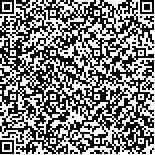下载中心
优秀审稿专家
优秀论文
相关链接
摘要

根据L/C双频共面SAR能够获取同一海域双波段电磁波后向散射系数,得到更多海洋目标特征信息的电磁散射特点,结合地球物理模型函数研究了一种新的SAR海面风场反演方法。利用L/C双频共面SAR的L和C两个波段的地球物理模型函数和后向散射系数等信息,通过地球物理模型函数联立以及构建和求解最小代价函数,直接从SAR数据本身获取海面风场信息,并借助辅助数据去除了风向的180°模糊,从而实现海面风场反演。仿真分析和海上机载同步飞行试验的研究结果表明,该方法可直接利用SAR数据本身获取精度较高的海面风速、风向;绝对辐射定标精度是决定海面风场反演精度的关键因素,海面风场反演误差随定标精度提高而减小;随着海面风速的增大,风速反演误差逐渐增大。论文提出的双频共面SAR海面风场反演方法解决了传统单波段单极化SAR海面风场反演存在的固有问题,机载同步飞行试验的海面风速和风向反演结果与调查船观测值的均方根误差分别为0.93 m/s和19.39°,可为星载SAR海面风场反演业务化和载荷研制提供支持。
In accordance with the ability to obtain further target characteristic information when detecting the same surface area with L/C common reflector dual-frequency SAR dual-band electromagnetic wave, a new ocean wind field retrieval method is proposed.
Wind speed and direction are estimated simultaneously using a geophysical model function and a normalized radar cross sections of the L/C dual-band in accordance with a common reflector dual-frequency SAR geophysical model function, and the fuzzy direction of 180° is wiped off using auxiliary data.
Verification results show that the wind field retrieval method can be used to retrieve a high-precision wind speed and direction without other background sources in accordance with the simulation and airborne synchronous flight test on a sea. The major error can be explained by the insufficient accuracy in calibrating the NRCS for wind speed and direction retrieval. The wind speed error increases with the value of speed, and the root mean square error of wind speed and direction between retrieval and survey ship observed are 0.93m/s and 19.39°, respectively.
The method for ocean surface wind field retrieval from the common reflector dual-frequency SAR solves the inherent problems of a sea surface wind field inversion of the traditional single-band SAR and increases the retrieval accuracy of the sea surface wind speed and direction, thereby providing support for business application and load developing of an ocean wind field retrieval from space-borne SAR images.

